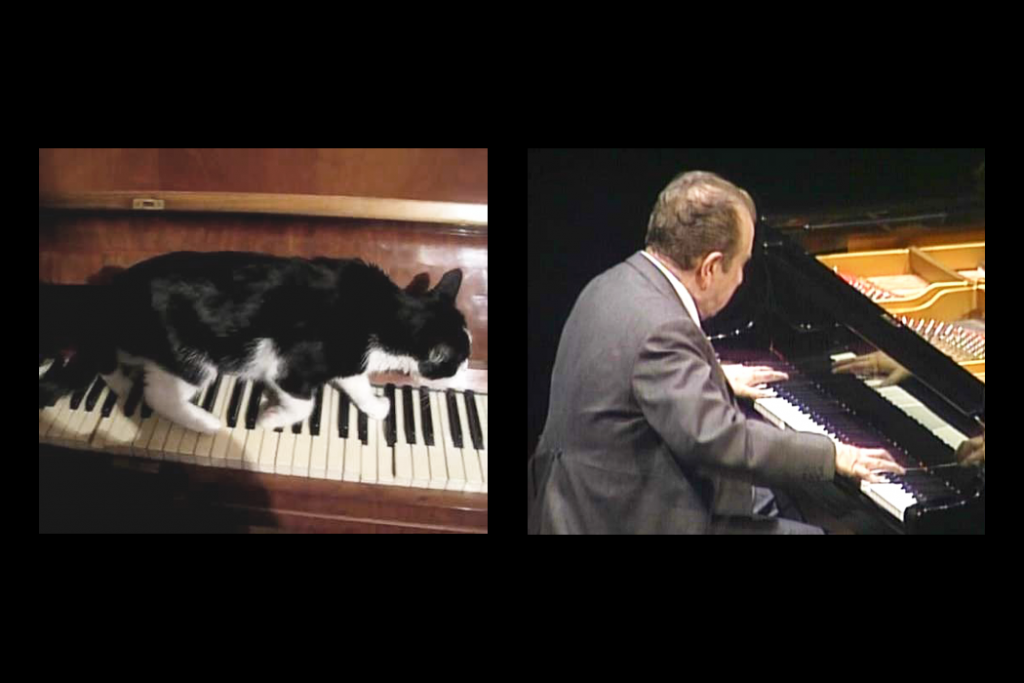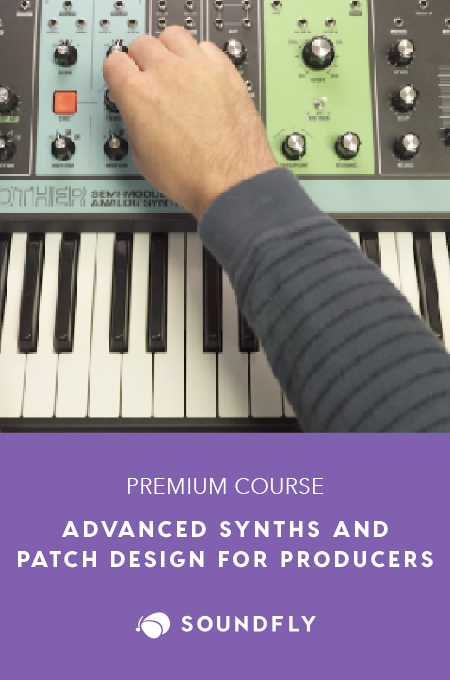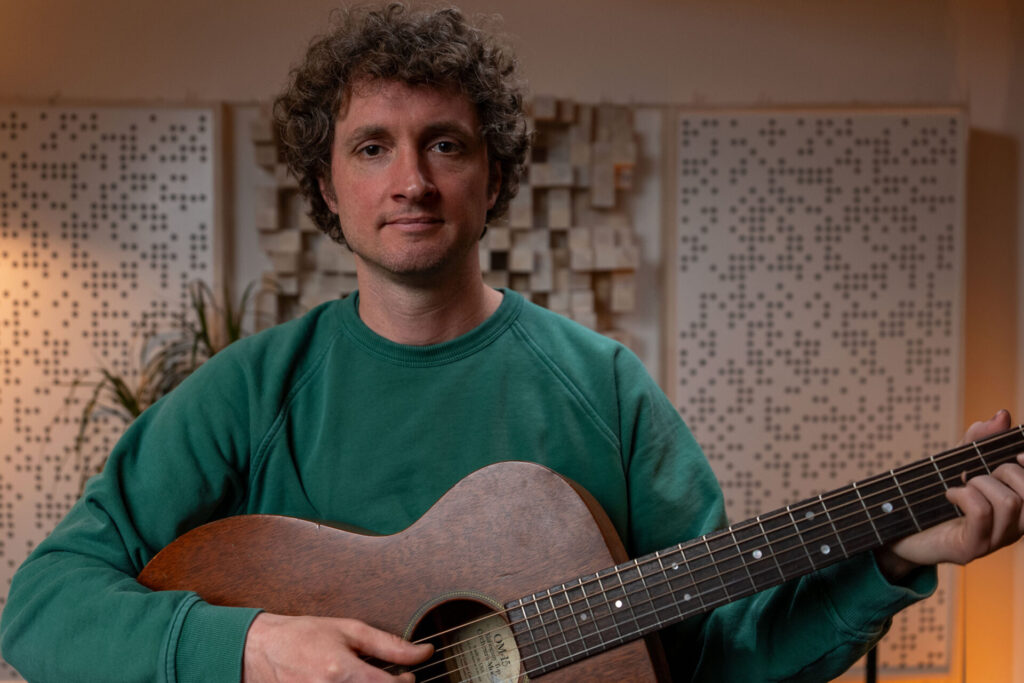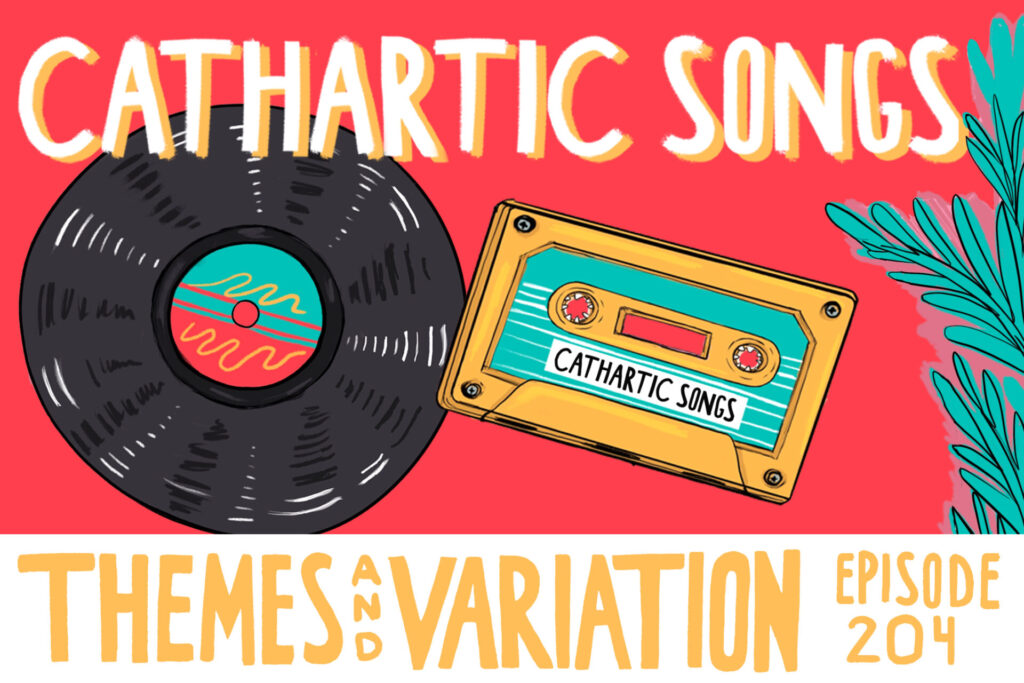+ Take your modern jazz piano and hip-hop beat making to new heights with Soundfly’s new course, Elijah Fox: Impressionist Piano & Production!
The New York and Stavanger, Norway-based contemporary artist Cory Arcangel is widely known and respected for his use of hacked technology such as video games and software to produce thought-provoking, beautiful artwork across a range of media.
His largely absurdist oeuvre explores technology from a number of theoretical angles and offers commentary on cultures that tend to gather around devices, applications, and games both during their rise to prominence and after they’re deemed “obsolete.” Arcangel’s work also calls into question what that word, in fact, signifies.
Some of Cory Arcangel’s most well-known works include Photoshop Gradient Demonstrations, digital paintings based on the software’s templates in the gradient tool; his Lakes series, which takes popular iconic and ironic photographs from contemporary culture (Instagram posts, memes, products) and manipulates the image into a serene flowing riverscape video; and Super Mario Clouds (2002), where he disabled the cartridge of the iconic Nintendo video game to display nothing but a blue sky and pixelated clouds from the game itself on an endless loop.
Despite his focus on tech, coding and games, Arcangel actually studied classical guitar at the Oberlin Conservatory of Music, and music features heavily in a lot of his work, including live performance.
In his video piece, Drei Klavierstuke, Arcangel recreates one of Austrian composer Arnold Schoenberg’s most famous studies for solo piano, an early trial working in the 12-tone method of composing, Drei Klavierstüke, Opus 11 (Three piano pieces) (1909), edited together using nothing but YouTube videos of cats playing or walking on a piano.
Obviously, videos of cats playing along to music have been a thing for as long as the internet has been around. Pets of all kinds simply make for better videos. Supercut mashups have also become extremely popular on YouTube in the last decade. We all have our favorites — “The Big Lebowski: Every Single ‘Dude’,” “Every Samuel L. Jackson ‘Motherf*#^er’… Ever”, and “Donald Trump Says ‘China’” are some of mine.
They take a lot of time and a lot of boring copy-and-pasting work. But Arcangel’s supercut is also a note-for-note recreation of one of the most notationally complex, emotive (despite being jarringly devoid of a tonal center), and expressive pieces of piano music written in the 20th century.
This is not Arcangel’s first supercut. He also published a version of Paganini’s Caprice No. 5, a repertoire staple of heavy metal guitarists showing off their chops, splicing together hundreds of single notes played in guitar instruction videos.
The fact that Drei Klavierstuke uses as its source material videos of cats accidentally hitting random notes on the piano is a feat of both technical and time-management editing mastery. The question is, though, how does it stack up to a professional, and widely lauded, performance of Schoenberg’s piece for solo piano?
Let’s find out!
Here are Arcangel’s three videos for Schoenberg’s Drei Klavierstüke, Opus 11 (Three piano pieces) performed in its entirety by piano-playing cats on YouTube. It’s presented side by side with Claudio Arrau’s more traditional performance of this piece from London in 1959. Arcangel actually synced his version with Glenn Gould’s, but I wanted to see if it would hold up against another interpretation and compare the artistic decisions on behalf of each “performer” (cats included).
Thanks to the artist’s openness to sharing his work for free, gleaned from his activity in the open-source coding community, he’s made all three parts of this video available on his YouTube channel. Follow along with Schoenberg’s score here if you like.
+ Read more on Flypaper: “Are There ‘Happy’ Blues Notes? Well, Maybe…”
And now for Claudio Arrau’s version. Here are the time codes for the start of each part of the piece:
Part I – 0:00
Part II – 3:50
Part III – 11:28
What’s lost and what’s, surprisingly, intact?
Tempo
The tempo isn’t totally accurate compared to Arrau’s performance. Considering that Schoenberg’s score calls for a pretty loose interpretation of tempo, using descriptive adjectives rather than an exact BPM, however, Arcangel and the cats’ version holds up pretty well!
Schoenberg’s piece calls for various tempos such as Mäßig (moderate speed), Sehr langsam (very slowly), and Bewegt (with motion, so… vivant). In parts of the piece, we also see appearances of viel schneller, instructing the performer to dramatically and suddenly increase the tempo, fließender, which means “flowing,” and sehr zart, which means “very tender.”
Arcangel is only able to work with what he has, i.e., essentially a bunch of naïve cats random slapping keys, so the tempo in his version is affected by how long a cat lets a note ring out before tapping another and whether the cat holds the key down or plays the note staccato.
It’s pretty hard to edit pacing without the ability to leave blank spaces in the video if need be, but there’s a really wonderful rest at 0:36 in Arcangel’s part one video.
Note Accuracy
Arcangel did a great job aligning each and every note of the piece. Where it gets tricky is when a cat hits two notes at the same time, a half or whole step apart. However, in certain instances when this does happen, Arcangel is careful to make sure the dominant note struck was the note marked on the page. Chalk this up to “performer interpretation,” and we’ve got one heck of an original performance!
I want to bring your attention back to Schoenberg’s score, though. Cats often hit a couple notes on the piano at the same time, because they’re walking on four paws. Luckily, their front two paws and back two paws are fairly close together, creating lots of opportunities for them to hit those major and minor thirds (as well as other intervals) in both clefs that Schoenberg laces throughout the piece. Their paw wingspan kind of matches what we can achieve with two hands. It kind of makes you wonder whether Schoenberg got the idea of writing atonal music from a cat…

Lastly, Arcangel gets the octave locations of each note surprisingly accurate throughout the piece. Bravo to that.
+ Read more on Flypaper: “Why Every Piano You’ve Ever Played Is Too Small”
Dynamics/Expressiveness
If we’re looking at accents, unfortunately Arcangel’s version falls pretty short of the mark, but he’s hardly to blame for that. No amount of video editing can take a cat-sized forte and turn it into a feathery pianissimo.
This piece might sound like it has no noticeable flow upon first listen, but if you really engage with it, there are tons of moments of expression for the performer to navigate. With very little flexibility in the cats’ performances, Arcangel needs to rely on different devices than Arrau in order to achieve the emotive narrative flow of the piece.
Where Arrau is able to let some tensions linger, for example, or play with the notion of a mumbled piano line leading to or away from a clearly articulated one, enhancing the expressive power of these movements across the piano, Arcangel’s cats often fall flat. Instead, he relies on the visual elements of performance appearing in the video, containing subtle humor, startled awkwardness, and improvised choreography on the part of the cats themselves to achieve the same effect.
In the same way that Arrau’s fluctuations of tempo, dynamics, and flow help shape the evolving mood of this piece, so too does Arcangel’s arsenal of feline performers. Hence, the crucial difference here lies in the fact that Arrau’s is a piece of music and Arcangel’s is a work of video.
Other Differences
This is going to sound ridiculous, but the hand-vs.-paw gap is considerably wide when listening for the intricacies of a performer’s touch. It makes me ponder how perfectly adapted we are to play an instrument like the piano with our multi-jointed fingers, opposable thumbs, the wide muscular dexterity of our arms, and how utterly useless a cat would be if it was actually tasked with having to play a piece of music as written.
Arrau’s touch here is notably delicate, refined, and calculated. The cats are random, playful, exploratory, and sloppy. Both, however, seem to bring out the best of what Drei Klavierstüke has to offer in their own ways, and both might help inform future listens of this piece.
Play Your Heart Out!
Continue your learning adventure on Soundfly with modern, creative courses on songwriting, mixing, production, composing, synths, beats, and more by artists like Kiefer, Kimbra, Com Truise, Jlin, Ryan Lott, RJD2, and our newly launched Elijah Fox: Impressionist Piano & Production.




